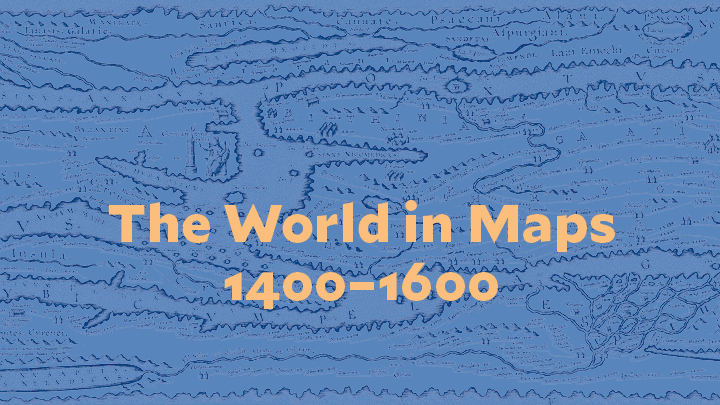The World in Maps, 1400-1600

Events
Opening Lecture: September 15, 2022, 4pm
From Dati to d’Anville: Early Modern Europe and the Birth of the Atlas by James Akerman, Director, Hermon Dunlap Smith Center for the History of Cartography and Curator of Maps at the Newberry Library, Chicago.
More information and speaker’s biography. The lecture at 4pm will be followed by a public reception to celebrate the exhibition.
The Vinland Map: Scientific Discoveries and Historical Revelations October 10, 2022
This afternoon workshop will feature the scientists and conservators at Yale University’s Institute for the Preservation of Cultural Heritage and Yale University Library in conversation with Ray Clemens, Curator of Early Books and John Paul Floyd, an independent historian working in Scotland.
Selected Exhibition Highlights
The Aguiar Map from 1492
The 1492 Aguiar map, the oldest dated Portuguese portolan chart in existence, dramatically demonstrates the world as Christopher Columbus and his crew would have seen it on their first voyage in 1492. Along with the world map of Henricus Martellus (below), these maps indicate the real dangers Columbus faced and answer fundamental questions about his first voyage. This map is featured in the 2022 book by Alida C. Metcalf, Mapping an Atlantic World, c. 1500.
The World Map of Henricus Martellus
The Martellus world map, composed around 1490, is a stunning rare survival of the pre-exploration world. One of the largest maps in the collections, it is too large to be displayed along with the portolans, so a facsimile is on display in the public exhibition. The original is in the library’s courtyard level open to registered researchers. The map shows a very different perspective than the portolans–it is based on the ancient maps composed by Ptolemy, transmitted to Europe by Arab scientists and geographers.
The Beccari Map
The Beccari portolan chart (1403) is far older than the Aguiar map but contains a crucial cartouche that describes how map makers such as Beccari composed these maps, particularly their reliance on oral knowledge from sailors used to accurately measure the distances between ports. For this reason, Beccari’s map is one of the most studied by cartographers.
The Abenzara Map
The Abenzara map is unique for entirely different reasons. Judah Ben Zara (or Abenzara) was one of a handful of Jewish cartographers in Europe that we know of and his religion had a profound effect on his maps and his life. Only three maps of his survive. It is the only portolan made on goatskin in our collection and it seems likely an adaptation to a climate that did not produce the larger animals that provided the skins for other portolans.
The Vinland Map
The infamous Vinland map will be shown, along with the material acquired with it that purported to support its authenticity in 1965. We will also demonstrate the work done by the Institute for the Preservation of Cultural Heritage at Yale in 2019 to finally prove that the map was a fake. We will also show some recent forgeries acquired to allow historians and scientists to study the techniques forgers employ.